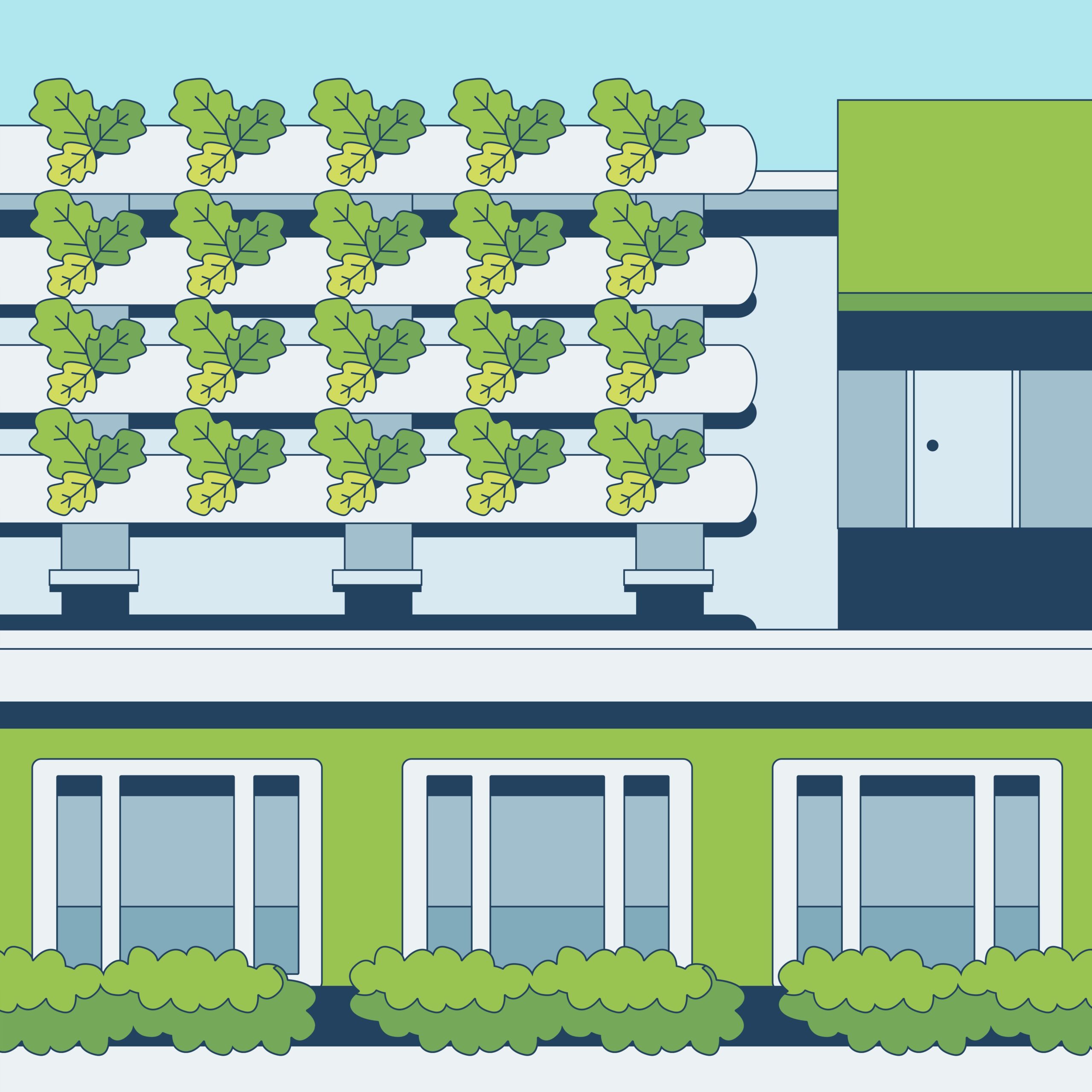When you hear the phrase “lower your standards,” it might sound like you’re settling for less or giving up too easily. However, this mindset can actually be a key to living a more stress-free and fulfilling life. In today’s society, pushing ourselves to the limit and constantly striving for high goals are often celebrated. Yet, this pursuit can sometimes lead to burnout and self-criticism. Let’s explore how lowering your standards can have a positive impact on your life.
(more…)Archives: Mind And Body
Embracing Non-Attachment: Riding the Universe’s Flow to Receive Infinite Grace
-
My lower back hurts when I do deadlifts.

If your lower back hurts when performing deadlifts, it’s important to address this issue to prevent injury and maximize the effectiveness of the exercise. Here are some common reasons for lower back pain during deadlifts and tips to help correct them:
1. Form and Technique
- Rounded Lower Back: One of the most common causes of lower back pain during deadlifts is rounding the back. Ensure that your spine remains neutral, with a slight arch in the lower back throughout the movement.
- Bar Path: The barbell should stay close to your body throughout the lift. A bar path that drifts away can place excessive strain on your lower back.
- Hips and Shoulder Alignment: Initiate the lift with your hips in the right position. Starting with your hips too high can place extra stress on your back. Your shoulders should also remain higher than your hips as you lift the bar.
- Fixes:
- Practice the hip hinge movement without weights to reinforce proper mechanics.
- Use a lighter weight until you can consistently maintain a neutral spine.
2. Weight Selection
- Using too much weight can compromise form and increase the risk of injury. Start with a weight that allows you to complete the movement with perfect form, and gradually increase the load over time.
3. Foot Positioning
- Feet should be about hip-width apart with toes slightly turned out. If your feet are too close together or too wide, it may alter your body mechanics and place additional stress on your lower back.
4. Core Engagement
- A weak or disengaged core can lead to lower back pain. The core muscles help stabilize your spine and maintain a neutral back position during deadlifts.
- Fix:
- Before lifting, take a deep breath into your belly and brace your core. Imagine tightening your midsection as if preparing to take a punch.
- Consider incorporating core-strengthening exercises into your routine, such as planks, dead bugs, or anti-rotational exercises like the Pallof press.
5. Glute and Hamstring Activation
- Insufficient activation of the glutes and hamstrings can cause the lower back to take on more of the load than necessary. Properly engaging these muscles helps protect your lower back.
- Fix:
- Warm up with exercises like glute bridges, hip thrusts, or leg curls to activate the posterior chain.
- Focus on pushing through your heels and squeezing your glutes as you stand up during the deadlift.
6. Mobility Issues
- Tight hamstrings, hip flexors, or limited ankle mobility can force you into improper positions, leading to lower back discomfort.
- Fix:
- Incorporate dynamic stretching and mobility exercises, particularly for the hamstrings, hips, and ankles.
- Use a proper warm-up routine before attempting heavy lifts.
7. Progression
- Consider Variations: If conventional deadlifts continue to cause discomfort, try variations like sumo deadlifts, trap bar deadlifts, or Romanian deadlifts, which can sometimes be more forgiving on the lower back.
If pain persists despite adjusting your form and technique, consider consulting a fitness professional for a personalized assessment or a healthcare provider to rule out any underlying issues.
-
The difference of bending your back versus maintaining an upright posture in a Bulgarian split squat

In a Bulgarian split squat, bending your back versus maintaining an upright posture can significantly affect your balance, muscle engagement, and overall safety. Here’s a breakdown of the differences:
1. Bending Your Back (Forward Lean)
- Balance: A forward lean shifts your center of gravity, making it harder to balance, especially if your core muscles aren’t adequately engaged. It can also put more stress on your front leg.
- Muscle Activation: Leaning forward tends to shift the emphasis toward the glutes and hamstrings of the front leg. This can be beneficial if you want to target those muscles more directly.
- Form: Bending your back can lead to poor form, especially if it turns into rounding the spine. This can increase the risk of back injury and reduce the effectiveness of the exercise.
- Common Mistake: Often, people lean forward excessively in an attempt to compensate for a lack of flexibility or strength in the legs.
2. Keeping an Upright Posture (Neutral Spine)
- Balance: Staying upright keeps your center of gravity more centered over your legs, making it easier to balance throughout the movement.
- Muscle Activation: Maintaining an upright posture focuses more on the quadriceps of the front leg while still engaging the glutes and hamstrings. The upright position helps distribute the workload more evenly between the muscles.
- Form: Keeping your back neutral and straight is generally safer for your spine. This posture ensures that the movement is executed with proper form, reducing injury risk and maximizing the effectiveness of the squat.
- Core Engagement: An upright posture requires more core activation to stabilize the torso, contributing to overall core strength.
Summary
- Bending your back during a Bulgarian squat increases the emphasis on glutes and hamstrings but can compromise balance and form.
- Keeping an upright posture allows for better balance, distributes the workload more evenly, and promotes safer lifting mechanics. This form is generally recommended to avoid injury and maximize the benefits of the exercise.
Incorporating both variations (with proper form) can help target different muscle groups, but maintaining an upright position is typically the preferred method for beginners and for ensuring a safe workout.
in Variation -
Points to reconsider if you are not seeing results with muscle training

If you’re not seeing results with your muscle training, it’s important to reevaluate your approach. Here are key points to reconsider:
(more…)in Workout -
Which is More Effective for Muscle Training: Higher Frequency, Short Duration or Lower Frequency, Long Duration?

Generally, higher frequency, short duration can yield more rapid results in muscle growth, strength, and fitness improvements. However, long-term consistency (years) often leads to more sustainable and profound changes.
Here’s a breakdown of how these approaches compare:
1. High Frequency, Short Duration (e.g., several months to a year):
- Rapid Gains: When training with high frequency (e.g., 3-6 times a week) over a shorter period, individuals can experience rapid gains in both muscle size and strength, especially if they’re beginners or returning to training after a break.
- Neuromuscular Adaptation: Frequent training provides consistent stimulus for neuromuscular adaptations, leading to quicker improvements in strength and muscle memory.
- Risk of Burnout: The high frequency over a short period may lead to burnout, fatigue, or overtraining if not managed properly, especially if the volume and intensity are too high.
- Maintenance Post-Gains: While short, intense training periods can lead to significant gains, maintaining those results requires ongoing training. Without long-term consistency, muscle and strength can regress.
2. Low Frequency, Long Duration (e.g., several years):
- Sustainability: Lower frequency training (e.g., 2-3 times a week) sustained over years is more manageable for many people, making it easier to integrate into a long-term lifestyle. This approach minimizes burnout and allows better recovery.
- Long-Term Progress: Consistent, long-term training leads to progressive improvements in muscle mass, strength, and endurance. While initial gains may be slower, this approach promotes sustainable growth and strength adaptations.
- Habit Formation: Long-duration training fosters the development of exercise habits and routines, contributing to overall health and fitness maintenance beyond muscle building.
- Plateau Management: Longer-duration training allows for strategic periodization (varying intensity and volume over time), helping to manage plateaus and avoid stagnation in progress.
Which is More Effective?
- For Immediate Results: If the goal is to see faster gains within a shorter timeframe, higher frequency, short duration can be more effective, especially when starting a new program or aiming for a specific short-term goal (e.g., preparing for a competition or event).
- For Long-Term, Sustainable Growth: Lower frequency, long duration is more effective for maintaining consistent muscle growth, strength development, and overall fitness over the long haul. Training over several years with manageable frequency minimizes injury risk and supports steady progress.
Ideal Approach:
- A combination might be the most effective strategy. For example, periods of high-frequency, short-duration training (6-12 weeks) followed by a transition to a more moderate frequency over a longer duration can maximize gains while promoting sustainability.
- Consistency and progressive overload are key. Regardless of the approach, long-term commitment to training (regardless of frequency) is crucial for maximizing results.
In summary, for long-lasting and meaningful muscle growth, a lower frequency, long duration approach tends to be more effective and sustainable. However, incorporating higher frequency periods can jumpstart progress or break through plateaus, making it valuable as part of an overall long-term training plan.
-
What to do if muscle pain does not come after workout

If muscle pain (often referred to as delayed onset muscle soreness or DOMS) does not occur after a workout, it is not necessarily a bad sign. Here are some things to consider if you’re not experiencing muscle pain post-workout:
1. Evaluate Workout Intensity
- Increase Intensity: Lack of soreness might indicate that your workout was not intense enough to challenge your muscles. To increase intensity:
- Add more weight or resistance.
- Increase the number of sets and reps.
- Shorten rest periods between sets.
- Introduce new exercises or vary the tempo of your movements.
- Progressive Overload: Implement the principle of progressive overload by gradually increasing the resistance or volume of your workouts to continue challenging your muscles.
2. Check Your Exercise Variety
- New Exercises: DOMS is more likely when you perform new exercises that your muscles are not used to. Changing your routine by incorporating different exercises or using various equipment (like free weights, machines, bands) can stimulate muscle growth and soreness.
- Focus on Eccentric Movements: Eccentric (lengthening) movements often cause more soreness. For example, slow and controlled lowering of weights in squats, deadlifts, or bicep curls increases muscle damage, leading to potential soreness.
3. Evaluate Recovery and Nutrition
- Proper Recovery: Adequate sleep, hydration, and post-workout nutrition can help reduce muscle soreness. If you’re recovering well, you might not experience as much DOMS.
- Protein Intake: Ensure you’re consuming enough protein to support muscle repair and growth. Aim for around 1.6–2.2 grams of protein per kilogram of body weight per day.
4. Understand Your Fitness Level
- Adaptation: Regular exercisers often experience less soreness because their muscles are more adapted to stress. This doesn’t mean that the workout wasn’t effective. Consistent training improves your muscles’ ability to handle stress, resulting in less DOMS.
- Fitness Goals: Consider if your goal is muscle hypertrophy (growth) or other forms of fitness like endurance, strength, or cardiovascular health. Lack of soreness doesn’t necessarily mean lack of progress.
5. Signs of Effective Workouts Without Soreness
- Strength Gains: If you notice that you’re lifting heavier weights or completing more reps over time, your muscles are getting stronger, regardless of soreness.
- Improved Performance: Better endurance, stability, and form in your exercises are indicators of effective training.
- Muscle Pump: A sensation of tightness or fullness in the muscles during a workout can indicate muscle engagement, even if soreness doesn’t follow.
6. Monitor Other Forms of Feedback
- Soreness is not the only sign of muscle growth. Pay attention to other signs such as muscle pump, progress in weights lifted, improved workout performance, and changes in muscle size and strength.
7. Consult a Trainer or Adjust Your Program
- If you’re concerned about not making progress, consult a fitness trainer to help you adjust your workout plan to ensure it aligns with your fitness goals.
Conclusion
Muscle soreness is not a requirement for progress or muscle growth. It’s simply one of many responses to exercise. Focus on gradually challenging your body with progressive overload, varying your exercises, and ensuring proper recovery to achieve your fitness goals.
- Increase Intensity: Lack of soreness might indicate that your workout was not intense enough to challenge your muscles. To increase intensity:
-
How to drink protein

Drinking protein effectively depends on your fitness goals, lifestyle, and dietary preferences. Here’s a simple guide on how to drink protein:
1. Choose the Right Protein
- Whey Protein: Fast-digesting, ideal post-workout for muscle recovery.
- Casein Protein: Slow-digesting, great for taking before bed.
- Plant-Based Protein: Suitable for vegans and those with lactose intolerance (e.g., soy, pea, rice proteins).
- Protein Blend: A mix of different protein types for varied absorption rates.
2. Measure the Right Amount
- Follow the serving size recommended on the protein packaging, usually around 20-30 grams per serving.
- For general use, aim for 1.2.2 grams of protein per kilogram of body weight per day, depending on activity level and fitness goals.
3. Mix With Liquid
- Water: Lower in calories; best for weight loss or quick absorption.
- Milk: Adds more protein, calories, and a creamier taste; great for muscle gain.
- Juice: For a different flavor, especially with unflavored or vanilla protein.
- Smoothies: Mix with fruits, yogurt, and other ingredients for added nutrients and variety.
4. Shake or Blend
- Use a shaker bottle to mix your protein powder with liquid if you’re on the go.
- Use a blender to mix in other ingredients (e.g., fruits, nut butter) for a more nutritious, filling option.
5. Timing
- Post-Workout: Drink within 30 minutes after exercise to aid muscle recovery.
- Meal Replacement: Use protein shakes as a convenient meal replacement if you’re in a rush.
- Morning or Before Bed: Consider drinking protein in the morning to kickstart metabolism or before bed (casein) for overnight muscle repair.
6. Enhance the Flavor (Optional)
- Add flavor enhancers: cinnamon, cocoa powder, or extracts (vanilla, almond).
- Add sweeteners: honey, agave syrup, or fruit to improve taste.
Tips
- Avoid Overuse: Balance protein shakes with whole food sources of protein (meats, beans, eggs).
- Stay Hydrated: Drinking extra water helps with protein metabolism and prevents dehydration.
This approach will help you drink protein efficiently and in a way that suits your fitness and nutritional needs.
-
In the end, workout is all about continuing

Absolutely. In the end, working out is all about consistency and perseverance. It’s about showing up, pushing through the tough days, and making small, steady progress. Progress doesn’t always come quickly, but those who keep going, even when it feels challenging, are the ones who see the best results. Every step counts, and each workout builds on the last.
-
How is gluten free?

A gluten-free diet eliminates foods that contain gluten, a protein found in wheat, barley, rye, and their derivatives. Many people follow a gluten-free diet for various reasons, primarily:
- Celiac Disease: An autoimmune condition where consuming gluten triggers an immune response that damages the small intestine lining. Strict adherence to a gluten-free diet is crucial for people with celiac disease to avoid health complications.
- Non-Celiac Gluten Sensitivity (NCGS): Some individuals experience symptoms similar to celiac disease when consuming gluten but do not test positive for the disease. Removing gluten can help alleviate symptoms such as bloating, fatigue, and headaches.
- Wheat Allergy: Those allergic to wheat may need to avoid wheat-based foods, though they might still tolerate gluten from other grains like barley and rye.
- Other Health or Lifestyle Choices: Some people choose to go gluten-free due to perceived health benefits, though scientific support for these benefits in the general population is limited.
Nutritional Considerations: Gluten-free products can sometimes lack essential nutrients like fiber, iron, and B vitamins. Many gluten-free foods, especially processed options, may also be higher in sugars and fats to improve taste and texture. Including naturally gluten-free foods like fruits, vegetables, lean proteins, and gluten-free whole grains (e.g., quinoa, brown rice) can help maintain a balanced diet.
Challenges: A gluten-free lifestyle can be restrictive, particularly because gluten is prevalent in many foods, sauces, and additives. However, the availability of gluten-free alternatives has increased, making it easier to adhere to the diet.
In summary, going gluten-free is essential for those with celiac disease or gluten sensitivity, and can be part of managing other health conditions. For those without a gluten-related disorder, a gluten-free diet is not necessarily healthier and may require careful planning to avoid nutritional deficiencies.
-
Thoughts on the Intervals (Breaks) Between Muscle Training Sessions

Intervals between muscle training sessions, or rest periods, play a crucial role in optimizing performance, muscle growth, recovery, and overall training effectiveness. The optimal rest period can depend on various factors, including training goals, intensity, individual recovery rates, and experience level. Here’s a breakdown of key considerations regarding rest intervals:
1. Muscle Recovery and Growth
- Muscle Recovery: Resistance training causes micro-tears in muscle fibers. The body repairs these tears during rest, leading to muscle growth (hypertrophy). Adequate recovery is necessary to ensure the muscles have enough time to repair and grow stronger.
- Training Frequency: For muscle groups targeted with intense training (e.g., heavy weights or high-volume workouts), it’s often recommended to wait 48-72 hours before working the same muscle group again. This allows for optimal muscle recovery and adaptation.
- Signs of Inadequate Recovery: If muscles still feel sore, weak, or fatigued, it’s a sign that they might need more time to recover. Insufficient rest can lead to overtraining, which can hinder progress and increase the risk of injury.
2. Training Goals and Rest Periods
- Hypertrophy (Muscle Growth): For muscle size gains, research suggests training each muscle group 2-3 times per week, with 48-72 hours of rest in between sessions. This allows for frequent stimulation while ensuring adequate recovery. During a session, rest intervals between sets typically range from 30 seconds to 1.5 minutes to promote metabolic stress.
- Strength Training: Strength-focused routines (e.g., powerlifting) generally involve heavier weights and lower repetitions. They require longer recovery periods both between sets and sessions. Resting 2-3 minutes between sets and allowing 72 hours between sessions for the same muscle group is common.
- Endurance Training: For muscle endurance, the focus is on lower weights and higher repetitions. Muscles generally recover faster from this type of training, so rest periods between sets can be shorter (30-60 seconds) and muscle groups can be worked more frequently, often with only 24-48 hours of rest between sessions.
3. Split Routines vs. Full-Body Workouts
- Split Routines: Many lifters use split routines (e.g., focusing on different muscle groups on different days) to manage recovery. For instance, training legs on Monday, back and biceps on Tuesday, etc., allows for sufficient recovery for each muscle group while maintaining frequent training sessions.
- Full-Body Workouts: Those who prefer full-body workouts typically train 2-4 times per week with at least 48 hours of rest between sessions. This structure accommodates a higher frequency of muscle stimulation while still allowing for recovery.
4. Individual Variability
- Genetics and Recovery Capacity: Some individuals have a naturally higher recovery capacity due to factors like genetics, age, nutrition, sleep, and stress levels. They may require shorter rest periods between sessions. Conversely, others may need longer rest, especially beginners or older athletes.
- Nutrition and Sleep: Proper nutrition (adequate protein and calorie intake) and sufficient sleep significantly impact recovery times. Optimizing these factors can sometimes allow for shorter intervals between sessions.
5. Monitoring and Adjusting
- Listen to Your Body: Monitoring how your body feels after workouts is essential. Persistent muscle soreness, fatigue, or reduced performance can indicate a need for longer rest periods. On the other hand, if you feel fully recovered and energetic, it might be possible to shorten intervals.
- Progressive Overload: Balancing adequate rest with progressive overload (gradually increasing weights or intensity) ensures continuous improvement without overtraining.
Conclusion
The optimal interval between muscle training sessions typically falls between 24-72 hours, depending on factors like training intensity, goals, recovery capacity, and overall program design. For hypertrophy, 48-72 hours of rest is ideal; for strength training, allowing at least 72 hours; and for endurance, 24-48 hours can suffice. The key is to monitor individual recovery, adjust rest periods based on feedback from your body, and align them with specific training goals.

